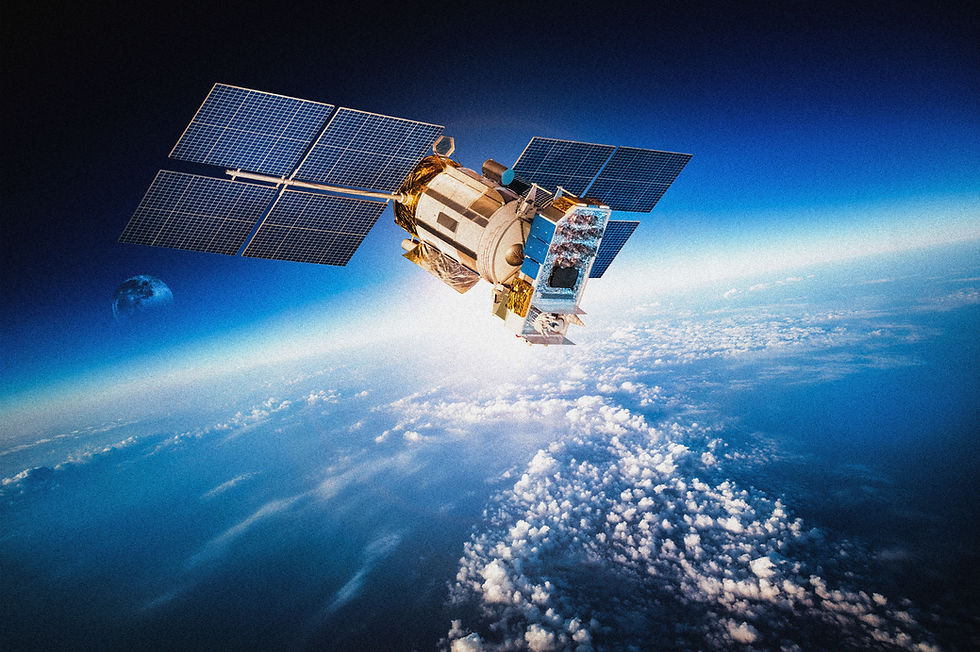Global collaboration for Space-based Earth Observation in achieving the UN SDGs
- Saurabh Gore (India), Project Analyst
- Oct 20, 2022
- 3 min read

Considering the recent development and advancement in space technology, specifically in Earth observation (EO) capabilities, its contribution to sustainable development cannot be ignored. More than 20 space agencies and international organizations coordinate internationally in space-borne missions designed to observe and monitor planet earth. Without knowing the current state of the planet Earth, sustainable development is “impossible”. The advantages of the ever-increasing functional capabilities of space-based observation platforms make UN-SDG efforts simpler. There is still a need for more efforts in the direction of international collaboration to provide sufficient awareness, education, technological needs, and Earth observation data distribution in developing, emerging, and non-space fairing countries.
The technological advancement shows major progress in Earth's observational capabilities such as low-cost satellite constellations providing global coverage even in remote areas, real-time satellite data relay systems, day and night observing capabilities, high-resolution sensors allowing to observe of finer details of the Earth’s surface, and efficient image processing capabilities. Apart from EO, Meteorology is the best-known field of space applications. Well-coordinated satellite network in polar and geostationary orbits provides reliable information and high-quality weather forecast. This information is crucial for monitoring growth in agriculture, tourism, and the influence of climate change. These services also support the critical decision-making process in various environmental and security-related domains by providing early warning and prevention of extreme weather events, monitoring land and water resources, desertification monitoring, fisheries management and food security, and disaster management. In conclusion, it can be observed that Earth observation offers a vantage point for accessing long-term trends in changing terrestrial and maritime ecosystems, socio-economic affairs, and environmental and security-related domains impacted by adverse effects of climate change. Also, it provides valuable insights to model health risk mitigation, road and transport infrastructure restoration for goods delivery, and better decision-making for local livelihoods affected by natural disasters.
Satellite-based measurements can provide data from local, regional to global scales accessible to almost anyone if made available. It helps to track progress consistently for a long time and provides an effective comparison of results among different countries to derive meaningful implementation to achieve sustainable development. Not all nations have the ability to develop and launch satellites to take advantage of space, but the availability of the datasets from space-faring countries, for all nations, is of fundamental importance to their uptake and global impact. For example, US mission data has been freely available for decades and the open data policy of Europe’s Copernicus program of multiple satellite data streams has improved prospects for accessibility of EO data required by the developing nations considerably. Modern computing and data handling capabilities have increased the availability and usability of the data that allows NSOs (National statistical offices) and UN agencies to design the framework to make optimal use of current and future satellite data streams.
There are some international coordination organizations and initiatives already existing to assist and share the vision of UN-SDGs, helping to navigate the transition to the inclusion of EO data in the SDG Indicator framework. Group on Earth Observation’s (GEO) EO4SDGs initiative focuses on the realization and awareness of the potential that Earth observation and geospatial information offers to the SDGs, supporting collaborations with NSOs, and building capacity within GEO on statistical practice for SDGs. The EO data are still large and complex and seek necessary expertise, infrastructure, and internet bandwidth to efficiently access, process and utilize the space-based data for local, regional, and national decision-making. Space-faring countries and developed nations have these capabilities that can support capacity building and technological development in emerging and non-space-faring nations through global collaboration